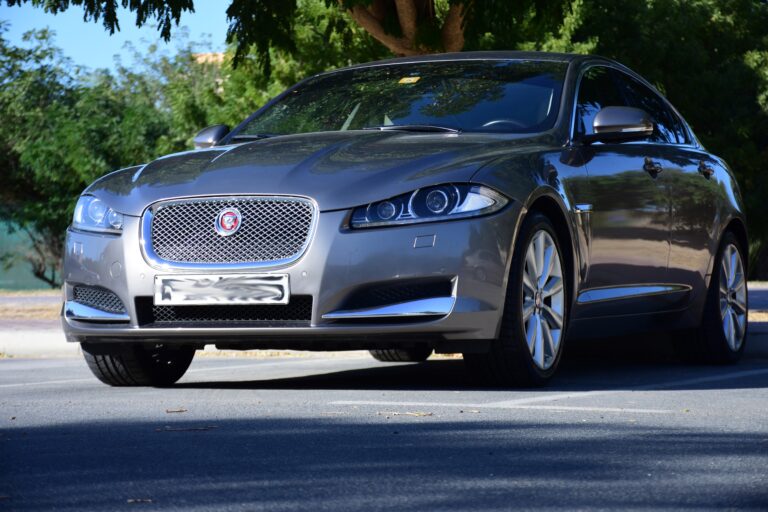Brand New Cars Under R250 000 In South Africa: Your Comprehensive Guide to Affordable Mobility
Brand New Cars Under R250 000 In South Africa: Your Comprehensive Guide to Affordable Mobility cars.truckstrend.com
In an era of rising inflation, volatile fuel prices, and increasing cost of living, the dream of owning a brand-new car in South Africa might seem increasingly out of reach for many. Yet, a specific segment of the market continues to offer a lifeline to budget-conscious buyers: brand new cars priced under R250,000. While this price bracket has undeniably shrunk over the years, it still presents a viable option for those seeking the peace of mind, warranty, and modern features that only a new vehicle can provide.
This comprehensive guide aims to navigate the nuances of purchasing a brand-new car within this challenging yet crucial price point in South Africa. We’ll explore the available options, key considerations, and practical advice to help you make an informed decision, ensuring your hard-earned money secures the best possible value and mobility solution.
Brand New Cars Under R250 000 In South Africa: Your Comprehensive Guide to Affordable Mobility
The Evolving Landscape of Affordable New Cars in South Africa
Just a few years ago, the R250,000 mark offered a wider array of choices, including some entry-level sedans and more feature-rich hatchbacks. Today, this budget predominantly confines buyers to the very bottom rung of the new car market – often compact city cars or entry-level SUVs (often referred to as ‘crossovers’) that prioritize affordability and fuel efficiency above all else.
The shrinking pool of options is a direct consequence of global supply chain issues, a weakening Rand against major currencies, and general inflationary pressures. However, for those who absolutely require the benefits of a new car – such as a full manufacturer’s warranty, roadside assistance, a pristine service history, and the latest safety advancements available at this price point – this segment remains highly relevant. It caters to first-time buyers, students, small families needing a second car, or individuals upgrading from older, less reliable vehicles.
Key Considerations When Buying Under R250,000
Purchasing a vehicle at the entry-level requires a sharp focus on practicality and a clear understanding of what you’re getting. It’s not just about the sticker price; it’s about the total cost of ownership and how the car fits your lifestyle.
1. Budgeting Beyond the Sticker Price
The advertised price is just the beginning. Factor in:
- Insurance: Crucial for any new car. Get quotes before buying, as premiums can vary wildly.
- Fuel Costs: While these cars are generally fuel-efficient, daily commuting adds up.
- Maintenance & Service Plans: Most new cars come with a basic warranty. Check if a service plan is included or if it’s an optional extra. Budget for scheduled services.
- Licensing & Registration: Annual fees apply.
- Optional Extras: Resist the urge to add costly accessories that push you over budget.

2. Prioritizing Needs vs. Wants
With a strict budget, compromise is inevitable.

- Essentials: Air conditioning, power steering, ABS (Anti-lock Braking System), and at least two airbags (driver and front passenger) should be non-negotiable.
- Comfort: Basic models might lack electric windows, central locking remotes, or sophisticated infotainment systems. Decide what you can live without.
- Space: Consider your typical passenger load and cargo needs. These cars are compact.
3. Safety Features
This is paramount. While advanced features like Electronic Stability Control (ESC) or multiple airbags are rare at this price point, ensure the car offers:
- ABS (Anti-lock Braking System): Prevents wheel lock-up during hard braking.
- Airbags: At least two (driver and passenger). More is always better if available.
- Good Crash Test Ratings: If available, check independent crash test results (e.g., Global NCAP for African market vehicles).
4. Fuel Efficiency
One of the biggest benefits of these small-engine cars is their excellent fuel economy. This directly impacts your running costs. Pay attention to the manufacturer’s claimed consumption figures, but also read real-world reviews.
5. Reliability and After-Sales Support
Opt for brands with a good reputation for reliability and a wide dealership network in South Africa. This ensures easier access to servicing, parts, and technical support when needed. A strong dealership presence also often translates to better resale value down the line.
6. Financing Options
Most buyers will require financing. Understand the terms:
- Interest Rates: Shop around for the best rates. A higher deposit can reduce monthly payments and total interest paid.
- Balloon Payments: While tempting for lower monthly payments, a balloon payment means a large lump sum is due at the end of the term. Understand if you can afford this or if you’ll need to refinance.
- Loan Term: Longer terms mean lower monthly payments but more interest paid over the life of the loan.
Top Contenders: Brand New Cars Under R250,000 in South Africa
The market for new cars under R250,000 is fiercely competitive but also very limited. Here are the primary models you’ll find, focusing on their entry-level variants that fall within this budget (prices are indicative as of early 2024 and subject to change):
1. Suzuki S-Presso
Often dubbed an ‘urban SUV’ for its slightly raised stance, the S-Presso offers a compact footprint with decent ground clearance. It’s known for its incredibly competitive pricing and fuel efficiency.
- Pros: Very affordable, good fuel economy, compact for city driving, relatively spacious for its size.
- Cons: Basic interior, limited safety features in base models, small engine (1.0L).
2. Renault Kwid
The Kwid cemented its place as a budget champion, offering SUV-inspired styling and a surprising amount of interior space for its class. It shares its platform with the S-Presso.
- Pros: Stylish design, good ground clearance, decent boot space, competitive pricing.
- Cons: Basic safety in lower trims, some interior plastics feel cheap, 1.0L engine performance is modest.
3. Suzuki Celerio
A more traditional hatchback than the S-Presso, the Celerio offers a comfortable ride and impressive interior space for its segment. It’s often praised for its practicality and build quality at this price point.
- Pros: Excellent fuel efficiency, surprisingly spacious cabin and boot, comfortable ride, Suzuki’s strong reliability reputation.
- Cons: Design might be a bit bland for some, performance is modest.
4. Toyota Vitz
Toyota’s re-entry into the ultra-affordable segment, the Vitz is essentially a rebadged Suzuki Celerio. This collaboration allows Toyota to offer a budget car with the backing of its renowned dealership network and after-sales service.
- Pros: Toyota’s brand reputation for reliability and after-sales support, excellent fuel economy, spacious for its class.
- Cons: Identical to the Celerio, so design and performance are similar.
5. Mahindra KUV100 Nxt
Another ‘compact SUV’ contender, the KUV100 Nxt stands out with its unique styling and a focus on practicality. It offers a slightly more robust feel than some rivals.
- Pros: Distinctive styling, decent ground clearance, surprisingly roomy for its footprint, competitive pricing for a "micro-SUV."
- Cons: Interior design can be polarising, refinement levels might be lower than Japanese rivals, fuel economy is good but not class-leading.
Navigating the Purchase Process
Even when buying a budget car, the process should be thorough and informed.
- Research Extensively: Use online resources, car reviews, and comparison tools. Look beyond official specs for real-world experiences.
- Test Drive Multiple Models: Don’t just pick one. Drive all the contenders. Pay attention to seating comfort, visibility, engine noise, ride quality, and how it handles your typical driving conditions.
- Visit Dealerships: Engage with sales representatives. Ask about included features, optional extras, service plans, and financing options. Don’t be afraid to negotiate, even on entry-level models.
- Understand the Fine Print: Read the warranty terms, service plan details, and any financing agreements carefully before signing. Clarify anything you don’t understand.
- Consider a Trade-in: If you have an existing vehicle, get it appraised. Understand that its trade-in value might be lower than private sale, but it offers convenience.
- Pre-Delivery Inspection: Before taking delivery, inspect the car thoroughly for any cosmetic damage or missing items. Ensure all features work as expected.
Maintaining Your Budget-Friendly Ride
To maximize the longevity and value of your new car, proper maintenance is key.
- Adhere to Service Schedules: Follow the manufacturer’s recommended service intervals. This is crucial for maintaining your warranty and the car’s performance.
- Monitor Fuel Efficiency: Keep an eye on your fuel consumption. Any sudden drops could indicate a problem.
- Regular Checks: Perform basic checks yourself – tyre pressure, oil levels, coolant, brake fluid, and windscreen washer fluid.
- Drive Responsibly: Smooth acceleration and braking, avoiding harsh driving, will improve fuel economy and reduce wear and tear.
- Appropriate Insurance: Ensure your insurance policy is comprehensive and covers the full value of your new vehicle.
Price Table: Brand New Cars Under R250,000 in South Africa (Indicative Prices – Early 2024)
| Model | Starting Price (R) | Engine (L/cyl) | Power (kW) | Torque (Nm) | Claimed Fuel Economy (L/100km) | Key Safety Features (Base Model) | Key Comfort Features (Base Model) |
|---|---|---|---|---|---|---|---|
| Suzuki S-Presso | R174,900 | 1.0 / 3 | 49 | 89 | 4.6 | 2 Airbags, ABS, EBD | Aircon, Power Steering, Digital Cluster |
| Renault Kwid | R196,999 | 1.0 / 3 | 50 | 91 | 4.9 | 2 Airbags, ABS, EBD | Aircon, Power Steering, Front Power Windows |
| Suzuki Celerio | R183,900 | 1.0 / 3 | 49 | 89 | 4.4 | 2 Airbags, ABS, EBD | Aircon, Power Steering, Rear Parking Sensors (some trims) |
| Toyota Vitz | R189,900 | 1.0 / 3 | 49 | 89 | 4.4 | 2 Airbags, ABS, EBD | Aircon, Power Steering, Immobiliser |
| Mahindra KUV100 Nxt | R176,999 | 1.2 / 3 | 61 | 115 | 5.9 | 2 Airbags, ABS, EBD | Aircon, Power Steering, All Power Windows |
Note: Prices are for the entry-level manual variants that fall within the R250,000 budget and are subject to change by manufacturers. Fuel economy figures are manufacturer claimed combined cycle. Always verify current prices and specifications with an authorised dealer.
Frequently Asked Questions (FAQ)
Q: Are there really new cars available under R250,000 in South Africa anymore?
A: Yes, but the options are very limited and primarily consist of entry-level compact hatchbacks or "micro-SUVs" from brands like Suzuki, Renault, Toyota, and Mahindra.
Q: What are the hidden costs of buying a new car at this price point?
A: Beyond the purchase price, consider insurance, fuel, annual licensing fees, and scheduled maintenance costs (service plans might be optional or limited). Factor these into your monthly budget.
Q: Is it better to buy a new budget car or a used car for the same price?
A: This depends on your priorities. A new car offers peace of mind with a warranty, no previous owner issues, and potentially lower initial maintenance. A used car for the same price might offer more features, size, or power, but comes with higher risk (no warranty, unknown history) and potentially higher future maintenance costs.
Q: What about safety features in these affordable cars?
A: Most models under R250,000 will come with essential safety features like ABS (Anti-lock Braking System) and at least two airbags (driver and front passenger). Some might offer EBD (Electronic Brakeforce Distribution). Advanced safety features like ESC (Electronic Stability Control) or multiple airbags are typically found in higher-spec or more expensive vehicles. Always check the specific model’s safety ratings if available.
Q: Do these cars come with a warranty or service plan?
A: All brand new cars come with a manufacturer’s warranty, usually covering 3-5 years or a certain mileage. Service plans (covering scheduled maintenance) are often optional extras at this price point or might be very basic (e.g., 2 services/2 years). Confirm what is included before purchase.
Q: How much does insurance cost for these vehicles?
A: Insurance premiums vary based on the driver’s profile (age, experience, claims history), location, and the specific car model. Generally, entry-level cars are cheaper to insure than more powerful or luxury vehicles, but it’s crucial to get quotes before committing to a purchase.
Q: Can I get finance for a car under R250,000?
A: Yes, financial institutions do offer financing for vehicles in this price range. You’ll need a good credit score and a stable income. Consider the total cost over the loan term, including interest, and assess if you can afford the monthly repayments comfortably.
Conclusion: Smart Choices in a Tight Market
While the landscape of brand new cars under R250,000 in South Africa has become more challenging, it’s far from barren. For those who meticulously plan their budget, prioritize essential features, and understand the practicalities of entry-level motoring, the dream of driving a new vehicle is still within reach.
The options available offer reliable, fuel-efficient, and warranty-backed mobility solutions perfect for urban commuting, first-time car ownership, or as an economical second family car. By focusing on your true needs, conducting thorough research, and making informed decisions, you can navigate this segment successfully and drive away in a brand new car that perfectly fits your budget and lifestyle. The key is to be realistic about expectations and embrace the value these compact, capable vehicles offer in today’s economic climate.






